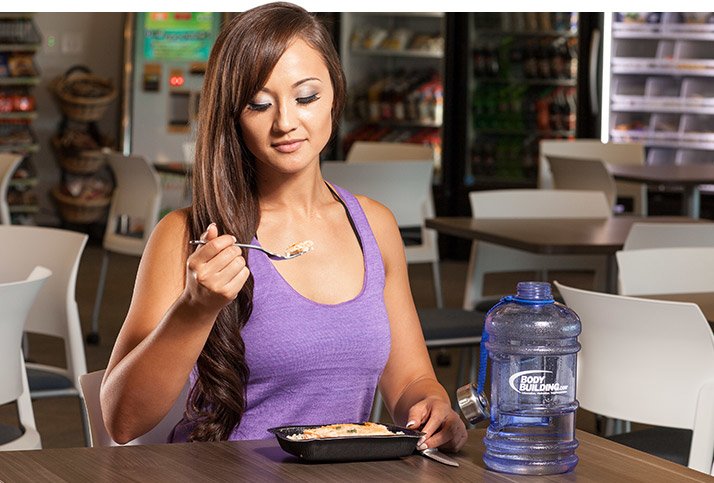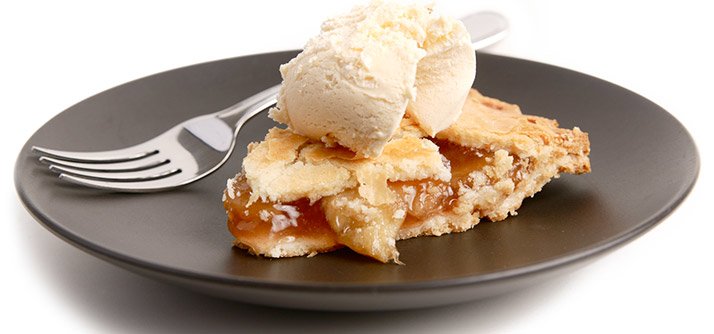
5 Strategies To Help You Stay Lean On Thanksgiving!
If there's one meal during the year that poses the most serious threat to your waistline, Thanksgiving would be it. Try these 5 strategies to stay lean and positive.
If there's one meal during the year that poses the most serious threat to your waistline, Thanksgiving would be it. Christmas may come close, especially when you factor in all the additional chocolates you're likely to consume throughout the day, but based on the fact that this holiday is trademarked by the meal alone, most people will significantly overeat.
Overeating, as long as it does happen only on occasion, doesn't have to be all that detrimental to your progress, particularly if you make a few smart adjustments that will actually get this meal working for you rather than against you.
Here is what you need to know in order to prevent an expanding waistline after the holiday this year.
Diet Wisely The Week Up To The Meal
The first thing you can do to ensure you don't come out of Thanksgiving with a higher scale reading than what you were going for is to diet carefully the week leading up to the meal.
Since weight loss or gain is determined based on calorie balance over time rather than day to day fluctuations, if you can create a decent calorie deficit during the week leading up to the meal, after you have that higher calorie meal on Thanksgiving, you'll actually just set yourself back closer to baseline.
This allows you some wiggle room when eating your Thanksgiving meal to take calories a little higher. For example, even if you can remove 200 calories from your daily diet starting on Monday leading up to Thanksgiving that will be 600 additional calories you can add.
Given a typical dinner meal of 500 calories, this allows you to eat 1100 calories that meal without gaining any weight (note that you may have typical dinner meals of more or less calories than this so the number would have to be adjusted).

Focus On Carbohydrate Rich Foods
The second thing you should do during your Thanksgiving dinner, especially if you're currently on a fat loss diet plan is focus as much as possible on carbohydrate rich foods, forgoing foods that are higher in dietary fat.
The reason for this is that a high carbohydrate meal will serve as what's typically referred to as a 'refeed', which is going to help reset some of the hormones in the body that are associated with a healthy metabolic rate.
You don't want to be eating a high amount of dietary fat at the same time you are eating a high carbohydrate meal, which is why focusing on strictly high-carb foods will be best.
If you adjust some of your thanksgiving recipes though this shouldn't be too hard to accomplish. The main things you'll want to do is make your stuffing outside of the turkey to avoid accumulated fat from the turkey, forego gravy and have cranberry sauces instead, and find a low-fat way to make mashed potatoes such as using chicken broth to replace butter.
If you follow these simple techniques you should be able to create a meal that's fairly low fat.
Get In A Hard Workout The Morning Of Thanksgiving
Next, to go along with the refeed concept of the Thanksgiving meal, try to get in a hard workout the morning of the meal. This will be beneficial as it will enable you to create a greater 'sink' to which to send the calories consumed that evening.

The more depleted your muscle glycogen stores are going into the meal, the more calories they will be able to store, reducing the chances that some calories get sent to the body fat stores.
This workout should be a weight lifting workout that focuses on the largest muscle groups in the body since these will require the most muscle glycogen for storage purposes. A hard legs workout along with a few sets for chest and back will work perfect.
Choose One Dessert Ahead Of Time
Another smart technique to limit how many additional calories you consume during your Thanksgiving meal is to choose only one dessert and make your selection before even sitting down.
Dessert is typically where you'll pack in the most calories, not to mention fat depending on the variety, so by limiting this you'll go a long way toward decreasing the damage done by the meal.
Get it straight away in your mind which dessert you will select so that when the dessert tray comes out, there's no contemplating or difficulty deciding.

Plan To Be Active The Day After
Finally, the last thing you can do to prevent fat gain during the Thanksgiving holiday is make sure you plan for some additional activity afterward. Like the concept of increasing the calorie deficit leading into the meal, another strategy is to up the activity level afterward to help burn off some of the calories consumed.
This is a slightly more dangerous approach as it does assume that you will in fact be more active (which some people won't) and you still must keep in mind just how much activity it will take. If you consume a piece of pumpkin cheesecake that could easily wrack up 700 calories, you could be looking at an additional two full cardio sessions added to the week.
Include extra helpings of mashed potatoes, stuffing, gravy and appetizers, and you'll need to take a week off work in order to fit all that exercise in. Practicing some dietary moderation along with slightly increasing activity levels to compensate is a far better approach.
Conclusion
So keep these points in mind as Thanksgiving draws near. Preparing for the big meal can help take away much of the anxiety that's typically related to it and ensure that you not only enjoy the holiday but don't experience regret and frustration afterward because the scale is not showing a number you're happy with.
